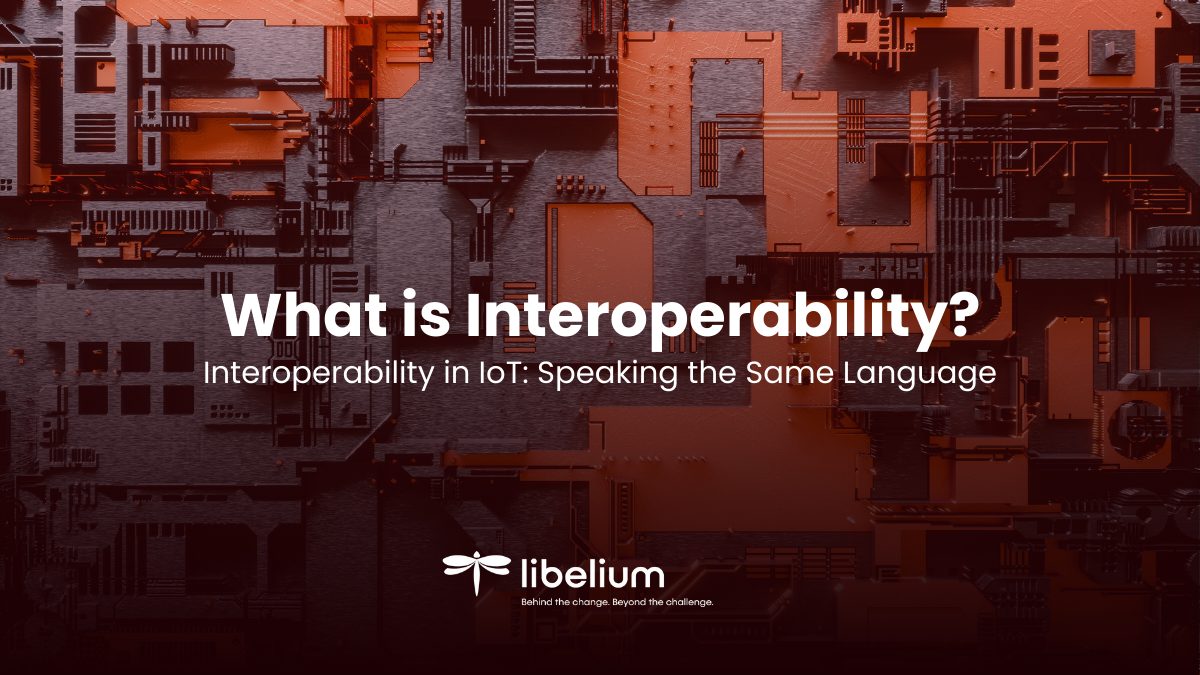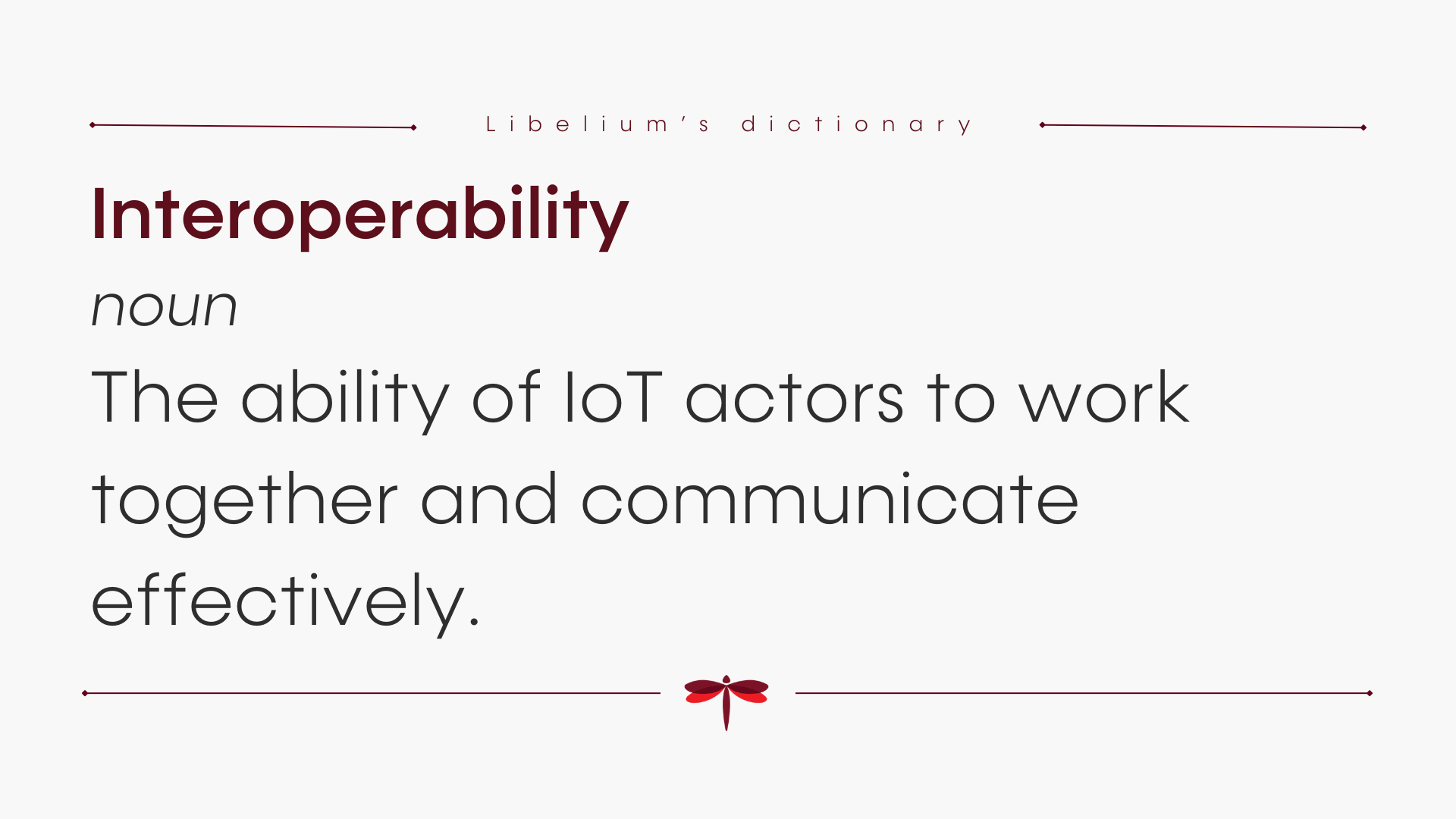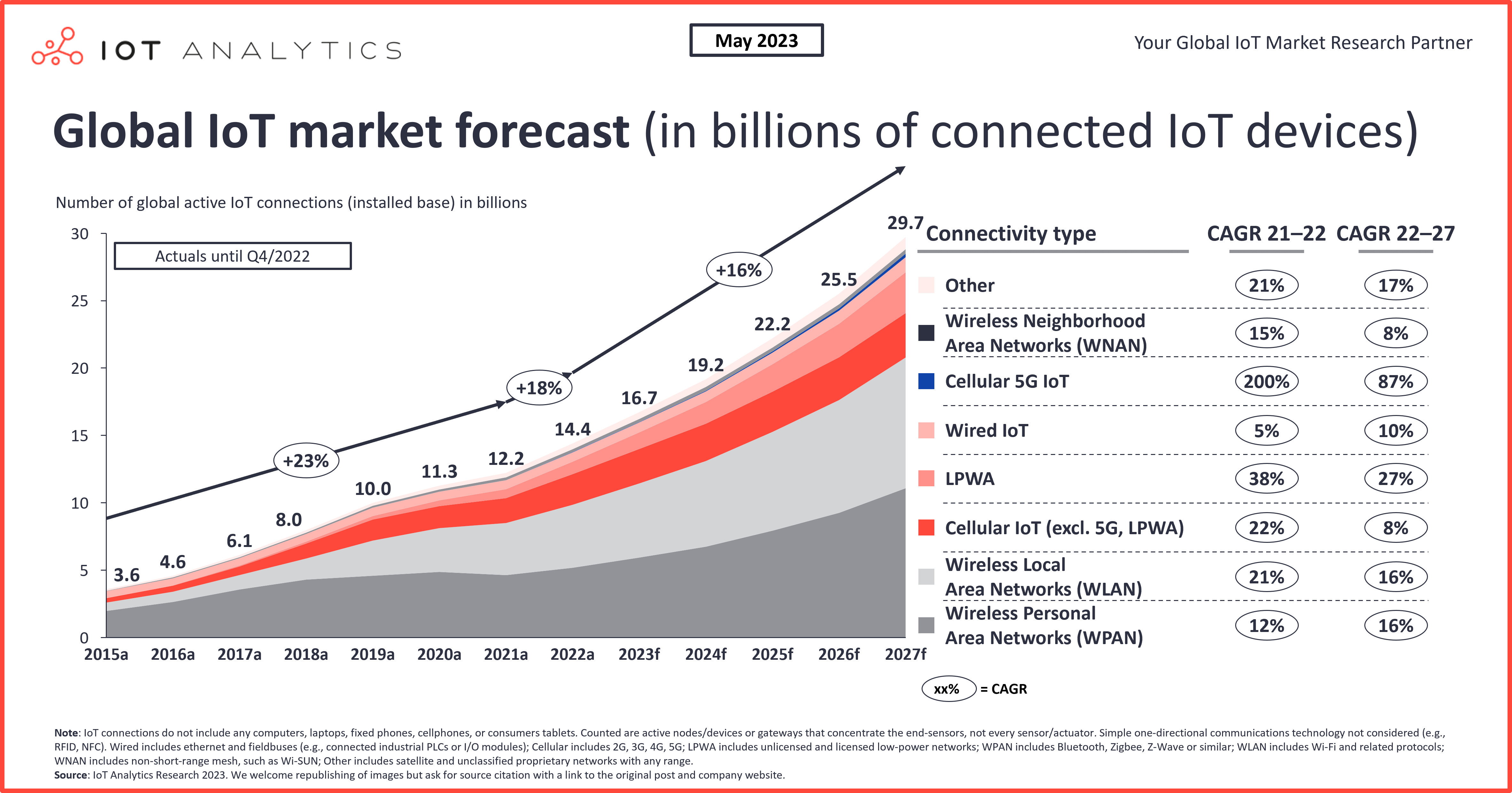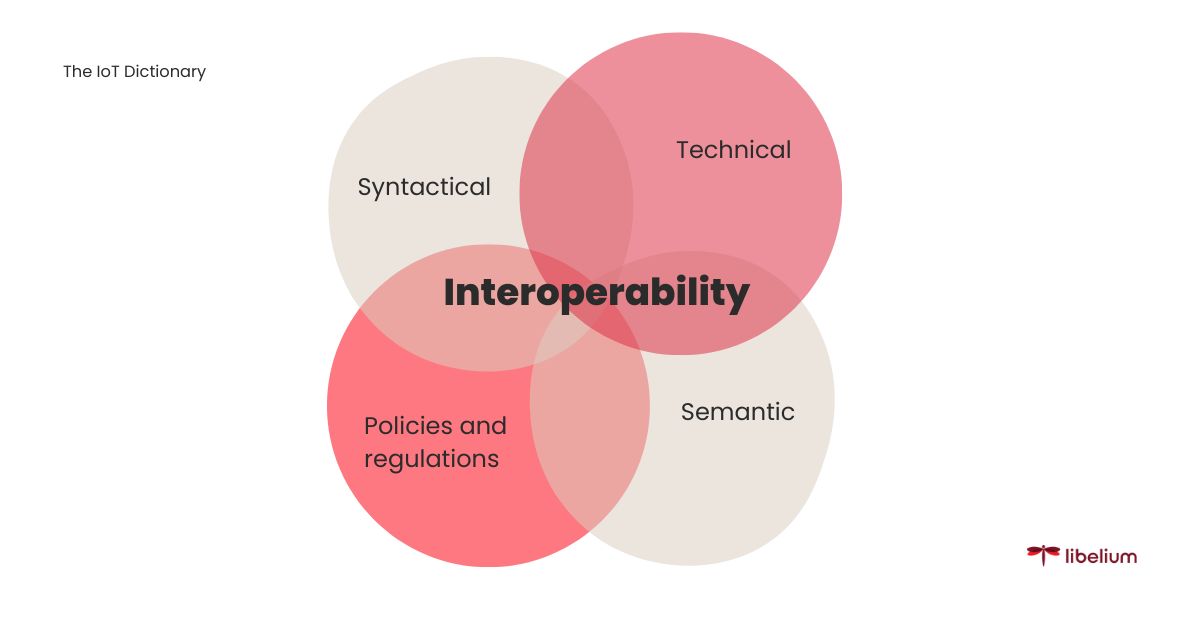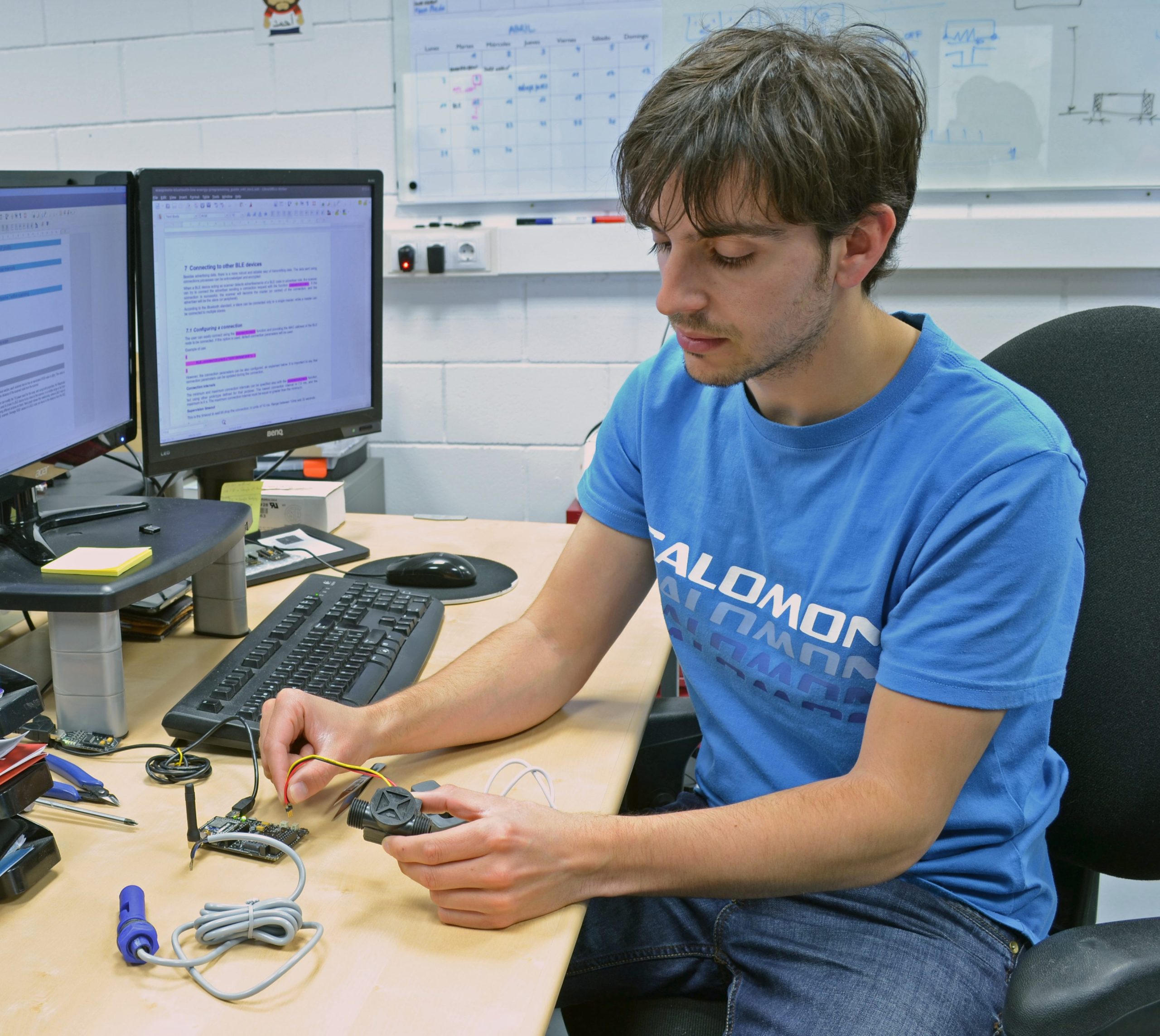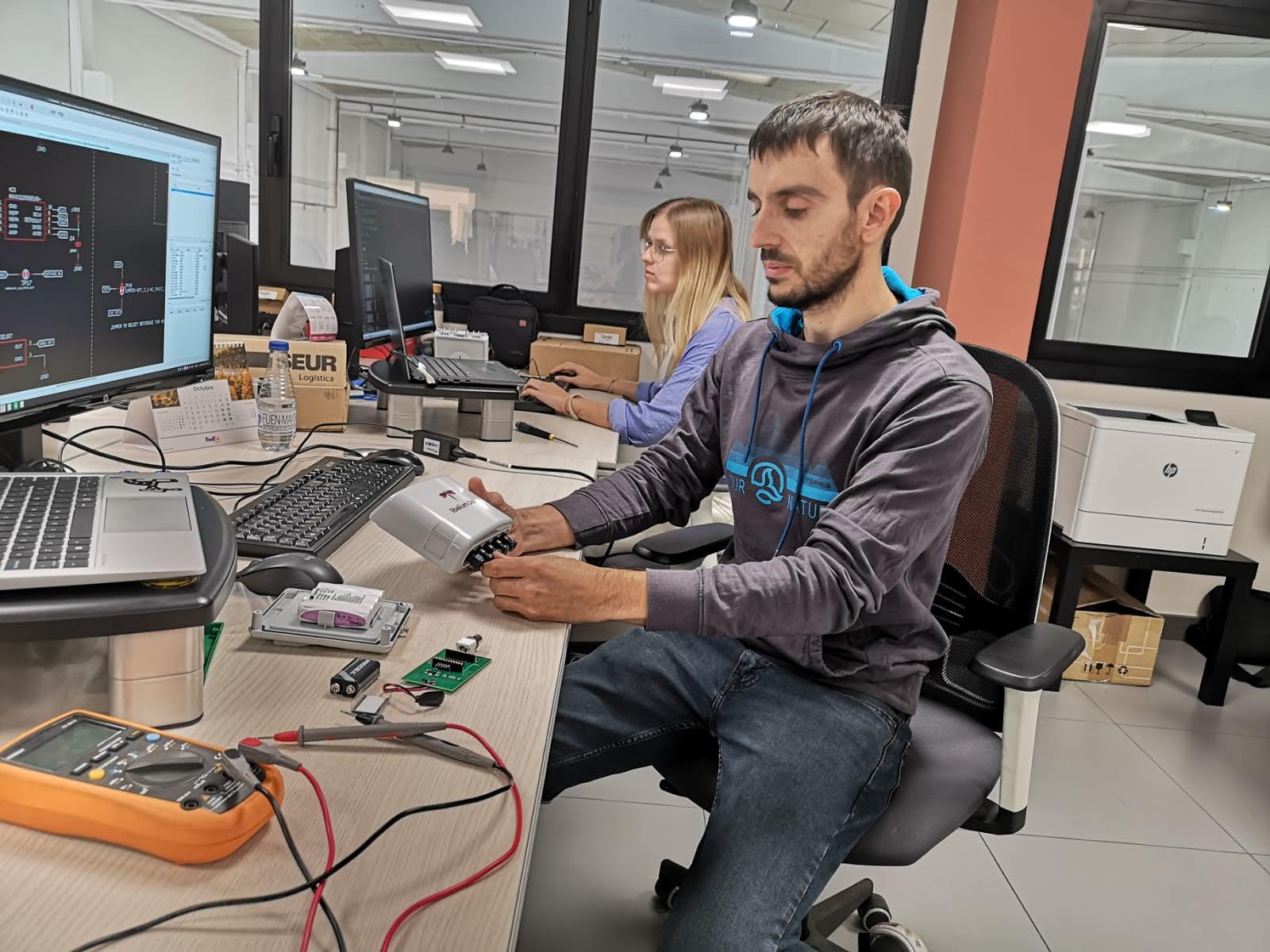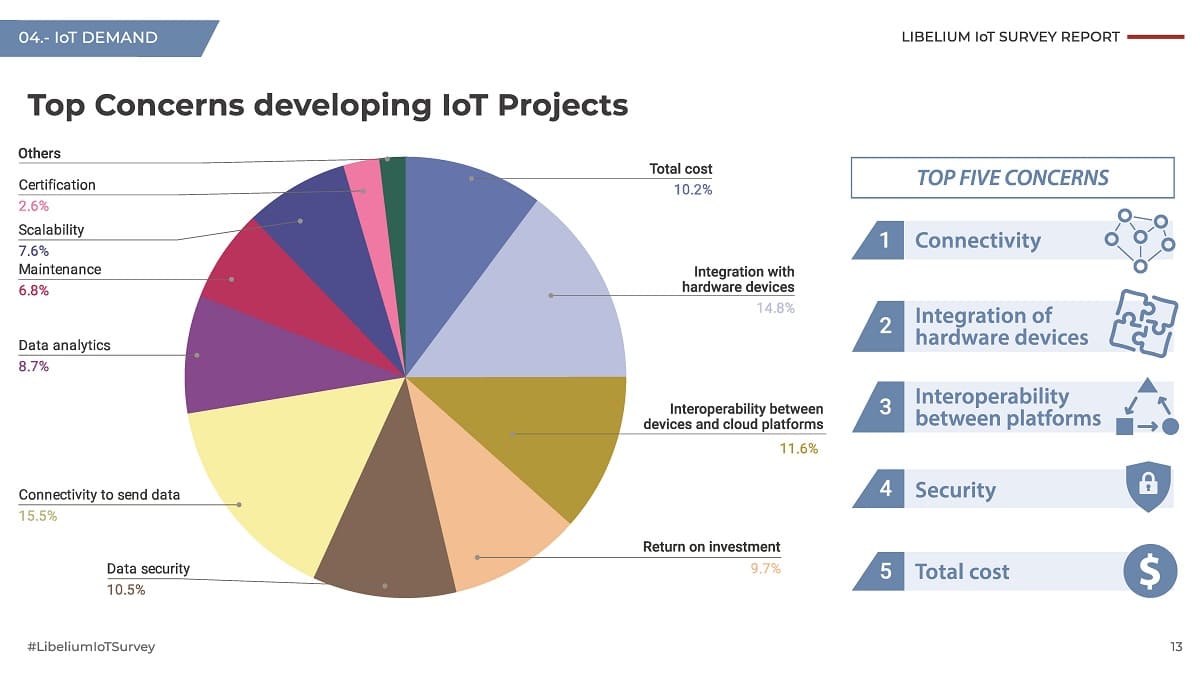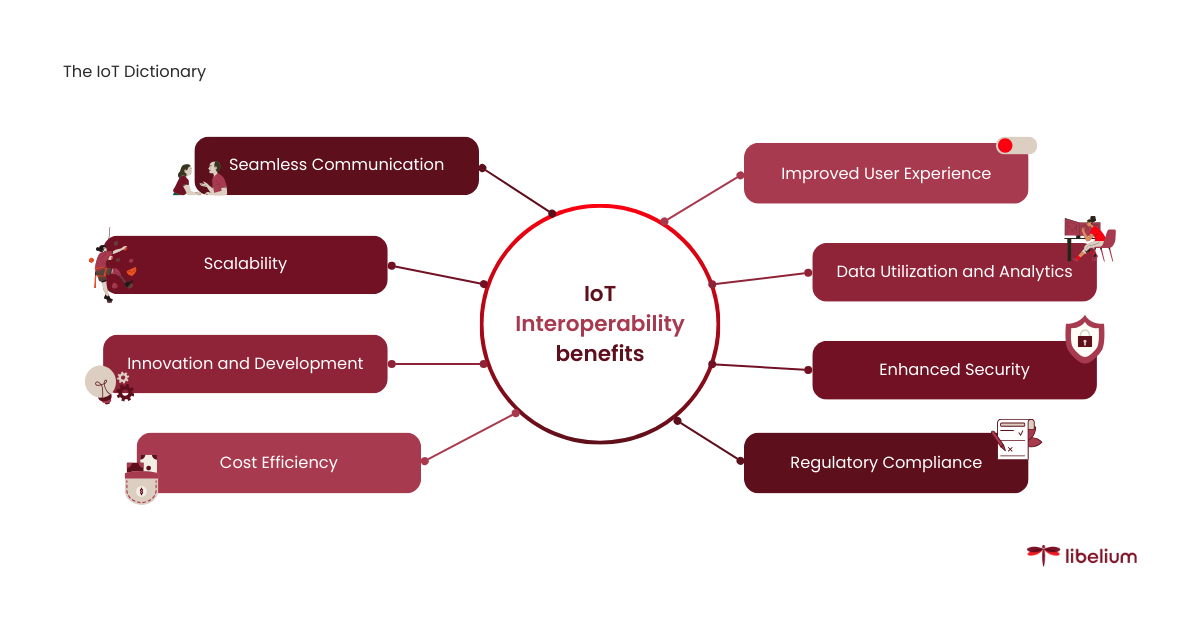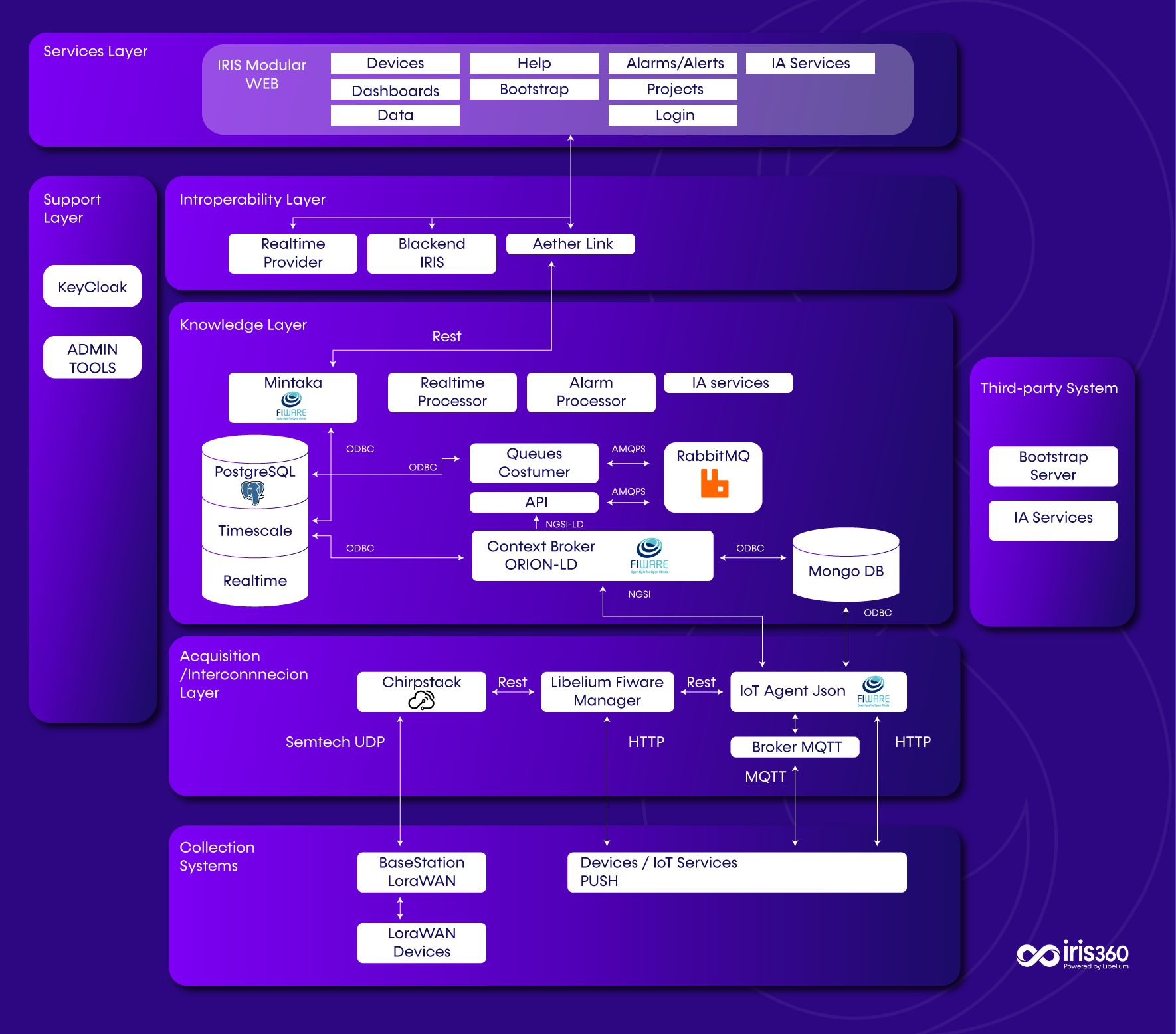Interoperability is the word everybody in IoT uses, but only some know how to define it.
Interoperability in the Internet of Things (IoT) is the ability of different devices, systems, and platforms to work together within the same ecosystem. In an ideal world, this should be easy, but we are in the real world, where manufacturers, standards, and technologies are diverse.
And everyone speaks their own language.
Diversity enriches any space, and the IoT market is no exception. However, it can also be a double-edged weapon since actors must try to understand each other.
If data is a new language, we need seamless communication.
This capability enables devices to communicate and share data seamlessly, execute coordinated tasks, and provide a cohesive user experience across diverse technologies and applications.
The concept of interoperability encompasses several key aspects:
- Technical Interoperability: Hardware and software in bare words. It requires common protocols, interfaces, and data formats so that devices can exchange information effectively.
- Syntactical Interoperability: The data exchange structure ensures the data format is understood across different systems. For example, using standardized data formats like XML or JSON can help achieve syntactical interoperability.
- Semantic Interoperability: A more elevated interoperability topic. This is about ensuring that the exchanged data is interpretable and meaningful to all parties involved. It goes beyond the data structure to include the meaning of that data so that information is understood in the same way by different systems. This often requires common data models and ontologies.
Overall, there is an extra interoperability factor: policies and regulations that facilitate cooperation between different organizations and sectors using IoT technologies. It involves aligning goals, legal frameworks, and operational procedures to enable shared services and collaboration.
Achieving interoperability poses significant challenges, including technical issues, standardization, privacy, and security concerns.
How Libelium understands interoperability
If you take Libelium as an example of the journey towards interoperability on IoT, it starts with a horizontal motherboard, our flagship Waspmote. Waspmote was our kick-off project. The idea was to design a horizontal board where different communication radio protocols and sensors could be connected to develop IoT projects for any vertical: agriculture, water, air quality, etc.
The interoperability approach here lies in the modularity of the board.
That was 2006.
Since then, IoT has changed, expanded and consolidated into what we know today.
As IoT became the best solution for our increasingly digitalized society and companies, embracing interoperability in the go-to-market plans for IoT products and solutions became more urgent.
If you didn’t want to die of success, your product had to know how to understand itself with other products and with the most popular platforms.
In our case, we solved this with Libelium Cloud. This platform allowed us to manage Libelium devices and send data to other clouds such as Alibaba, Amazon Web Services, Microsoft Azure, Telefónica or Thingworx, to name a few.
Moreover, it also allows sending to any other platform through standardized and extended protocols such as MQTT or HTTPS.
That was 2021, fifteen years from Waspmote.
Lack of interoperability has resulted in the disappearance of many companies. On the other hand, IoT companies that have survived are now stronger and building a more interoperable IoT.
2021 was critical for the IoT market. According to an IoT Analytics report, from 2019 to 2021, 26% of IoT companies had ceased to exist, and 24% no longer focused on IoT. Finally, and for the first time since 2015, the IoT platform market was not growing.
The IoT market stopped growing and started maturing. Libelium was both the subject and object of this maturity.
Fighting IoT fragmentation
In 2019, Libelium surveyed our ecosystem members. Hardware developers, system integrators, clients, partners…
One of the main concerns in developing an IoT project was, zero surprises here, the lack of interoperability.
Interoperability was crucial when it came to fighting IoT fragmentation. For IoT scalability and building a trusted ecosystem, devices from different domains and industries can interact and cooperate to deliver comprehensive solutions. The fastest way to scale solutions that bring us sustainable solutions for our urgent needs.
The importance of interoperability in the Internet of Things (IoT) is multifaceted and crucial for the effective functioning and scalability of IoT systems. Here are several key reasons why interoperability is so important in the IoT:
- Seamless Communication: Interoperability allows different IoT devices, systems, and platforms to communicate seamlessly. This is essential for the exchange of data and information in a coherent manner, enabling devices from different manufacturers or using different protocols to work together efficiently.
- Scalability: As the IoT ecosystem grows, with billions of devices connected, interoperability ensures that new devices can be added to the network without disrupting existing operations. This capability supports the scalable expansion of IoT systems, accommodating the integration of diverse devices and applications.
- Innovation and Development: Interoperability fosters innovation by allowing developers to create solutions that operate across various platforms and devices. This openness encourages the development of new applications, services, and technologies that can leverage the full potential of the IoT.
- Cost Efficiency: Interoperable systems can reduce costs associated with IoT deployment. When devices and systems can communicate and work together regardless of their manufacturers or underlying technologies, it eliminates the need for duplicate devices or costly custom integration efforts. This can lead to significant savings in both the short and long term.
- Improved User Experience: For consumers and end-users, interoperability enhances the user experience by enabling a seamless and integrated interaction with multiple IoT devices and services. This integration can lead to more intuitive and efficient smart environments in homes, workplaces, or public spaces.
- Data Utilization and Analytics: The ability to exchange and interpret data among various IoT devices and platforms is crucial for data analytics. Interoperability ensures that data collected from diverse sources can be aggregated and analyzed coherently, providing valuable insights that can drive decision-making and improve services.
- Enhanced Security: While integrating different systems and devices poses security challenges, interoperability also offers an opportunity to standardize security protocols and practices across the IoT ecosystem. A unified approach to security can help address vulnerabilities more effectively and ensure that security updates and patches are disseminated consistently across devices.
- Regulatory Compliance: As governments and regulatory bodies introduce standards and regulations for IoT devices, interoperability ensures that devices are compliant across different regions and standards. This compliance is essential for the global operation of IoT systems, facilitating international trade and cooperation.
How Libelium solves interoperability
Only by working with the best partners and speaking the language of sustainability Libelium has survived the fragmentation. Our technology can be integrated into digital twins,smart lamposts, or buoys to get data from the toughest conditions, such as the Arabic desert.
And it was possible thanks to the hardest hardware.
Considering all this expertise, we create the final solution.
iris360, Libelium’s data space, is the culmination of over 17 years of solving interoperability challenges. iris360 addresses the need for robust infrastructure solutions in an era where data is the driving force behind successful businesses. Our platform enables seamless integration of IoT sensors, ensuring reliable data collection and secure storage in the cloud.
By providing a scalable and efficient infrastructure, iris360 equips companies with the necessary tools to harness the power of data, setting the foundation for growth and innovation.
Libelium iris360 addresses:
- Devices-aware: Scalable and Secure Device Management for LoRa/LoRaWAN and Cellular devices over NB-IoT/5G/4G/GPRS (OMA LwM2M native platform).
- Context-aware: Powered by FIWARE core platform with standard API (ETSI #TheStandardsPeople NGSI-LD and W3C) and interoperability with Smart Data Models. Open & Agile Smart Cities (OASC) MiMs implementations in progress.
- Data-aware: Data Spaces connectors for data exchange with industrial data platforms such as GaiaX España and data business alliance.
- Sustainability-aware: Thermodynamics pollution propagation Models for air quality, wind and physical features to support the development of Digital Twins that enable a better capacity to monitor, predict, act and solve challenges in key domains such as energy (Red Eléctrica), mobility (Future: Fast Forward ), construction (NEOM), and environmental monitoring (Madrid Innovation).
- Compliance-aware: Regulations Compliance with reporting of air quality and noise impact in cities such as Valencia Las Naves, Las Rozas Innova and Ayuntamiento De Cartagena, analysis of Environmental regulations compliance, Low Emission Zones (LEZ), Environmental, Sustainability and Governance indicators (ESG), CO2-eq emissions calculation, and certification of data quality with IEEE standards.
For more interoperability points, iris360 works with FIWARE. This integration refers to the system’s ability to work and exchange data efficiently with various platforms, systems, and technologies.
FIWARE is an initiative that provides a set of open specifications and open-source software components to facilitate the development of smart solutions and services across various sectors, including smart cities, Industry 4.0, and sustainability, among others. Iris360’s use of FIWARE involves several important points in terms of interoperability:
- Open standards: FIWARE is based on open standards, which facilitates the integration of Iris360 with other platforms and systems that also follow these standards. This is crucial for collecting and exchanging sustainability data from diverse sources.
- APIs and reusable components: FIWARE offers a series of APIs (application programming interfaces) and reusable components, allowing communication and data exchange between different systems. Iris360 can leverage these tools to enhance its ability to connect with various data sources and management systems, making monitoring KPIs and reporting on sustainability more efficient.
- Scalability and flexibility: FIWARE’s architecture is designed to be scalable and flexible, meaning that Iris360 can adapt and expand according to an organization’s sustainability monitoring and reporting needs, regardless of the size or complexity of its operations.
- Data security and privacy: Interoperability is about exchanging data and securely respecting data protection regulations. FIWARE includes mechanisms to ensure data privacy and security, which are fundamental for any platform that handles sensitive information related to sustainability and ESG (Environmental, Social, and Governance) compliance.
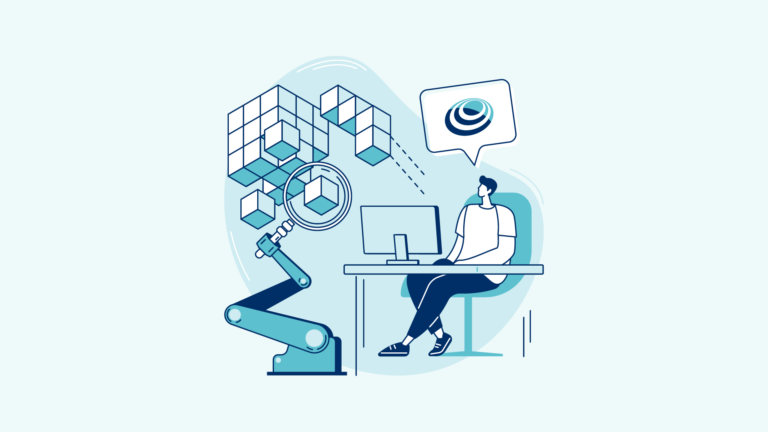
In conclusion, interoperability within the Internet of Things (IoT) represents a foundational pillar for the seamless functioning, growth, and innovation of interconnected systems across various domains.
As the IoT landscape continues to evolve, the emphasis on interoperability will undoubtedly remain central to fostering an environment of innovation, efficiency, and enhanced user experiences, steering the IoT market towards maturity and sustained growth.
And there will be Libelium.


